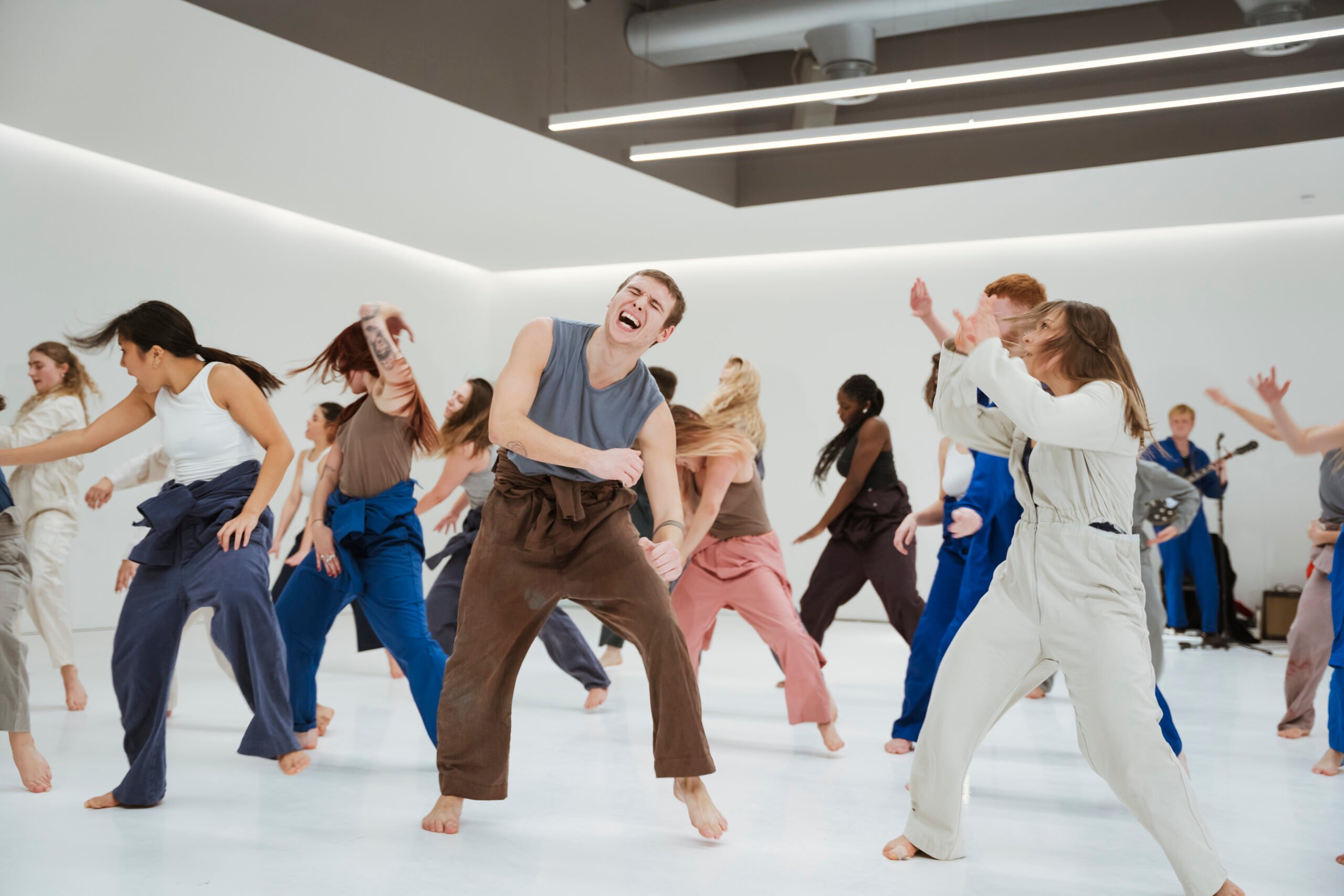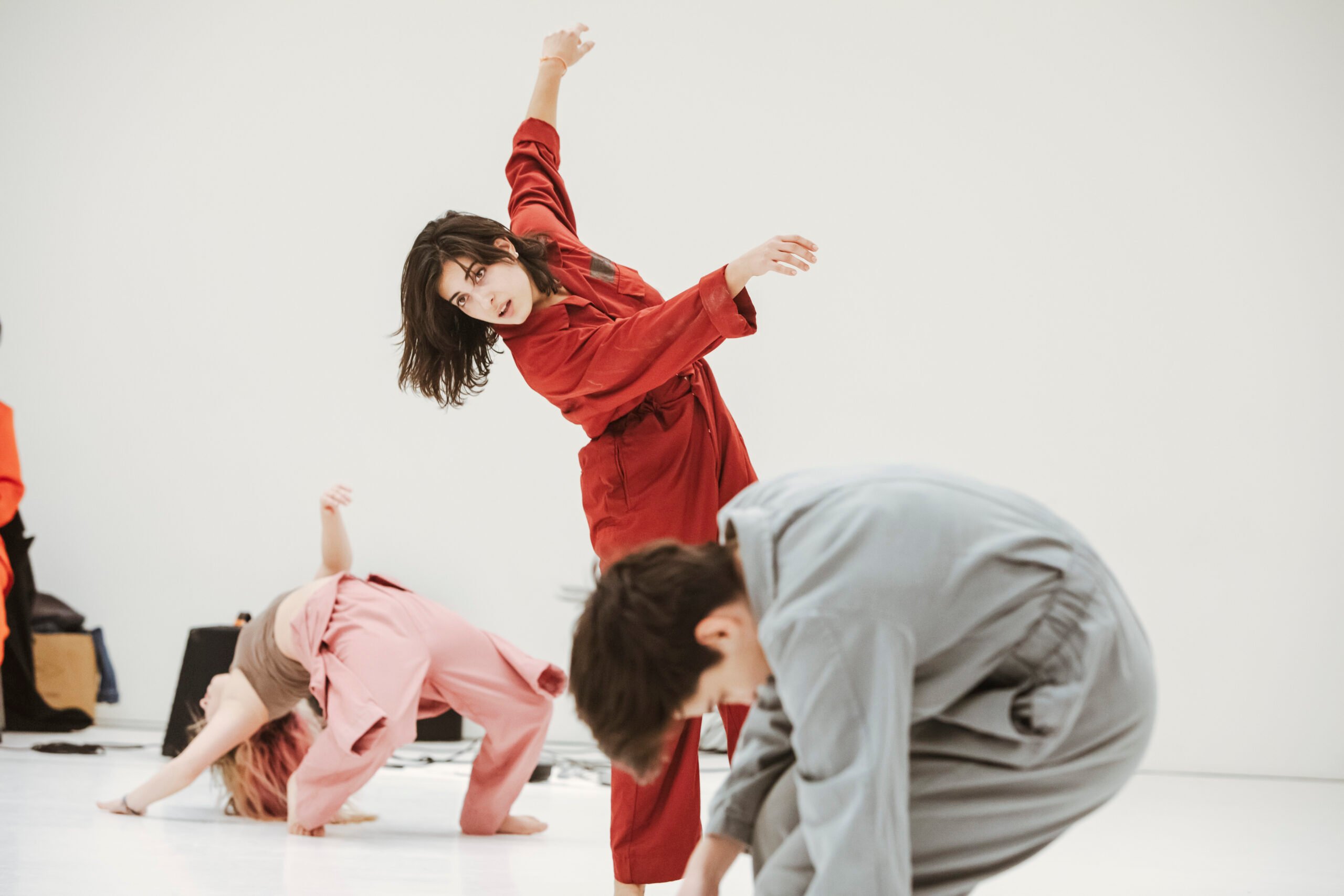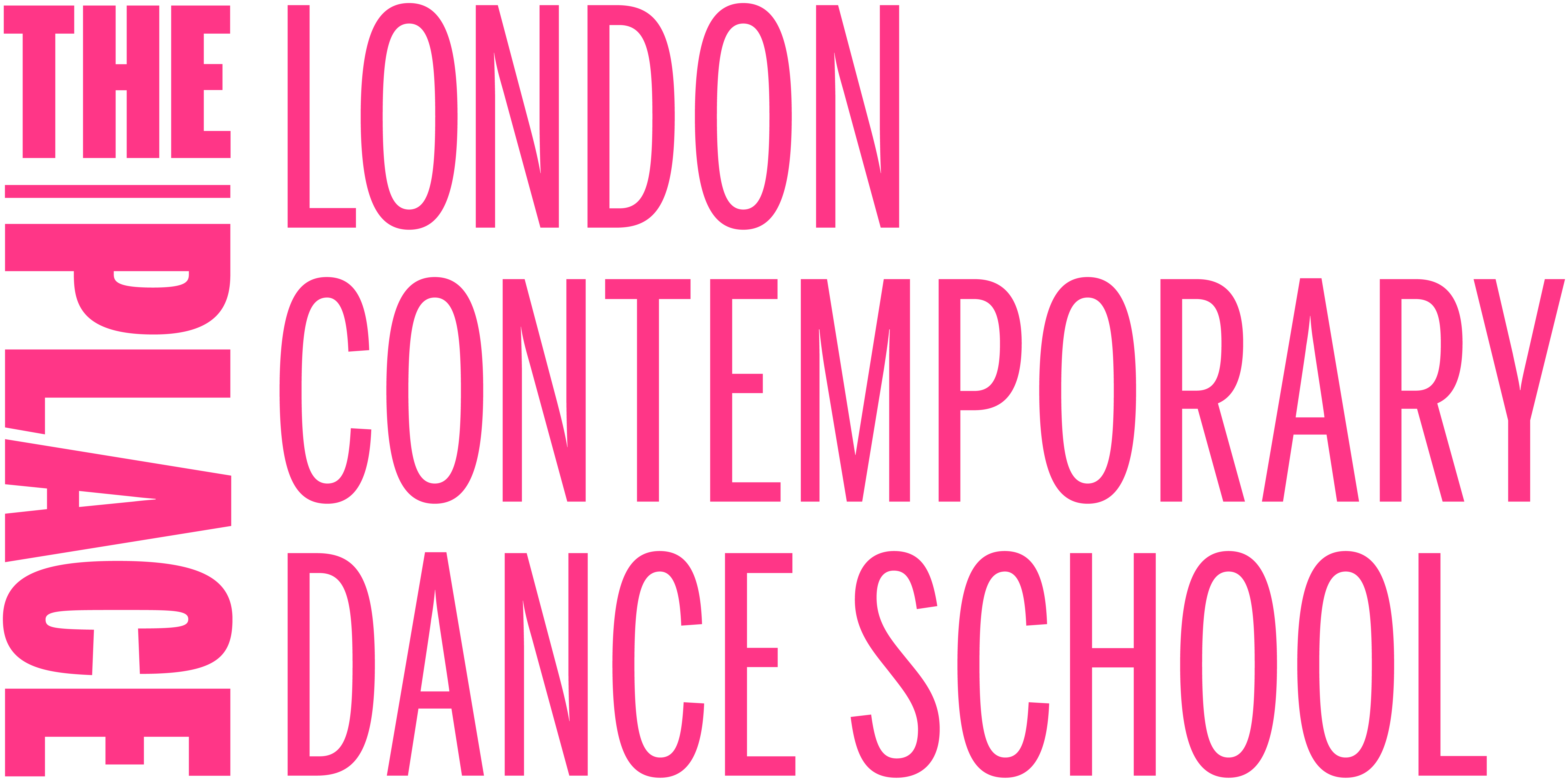
The Producing Dance Network wants to foster collaboration and innovative thinking towards a more sustainable ecosystem for dance (MA Dance Performance students X Kymara at Studio Wayne McGregor 2023)
Photo: Rocio Chacon
What do we mean by producing dance?
In the second of this series looking at the challenges of producing dance, ’Funmi Adewole, Rachel Krische and Efrosini Protopapa share initial findings from the work of the Future Ecologies network.
The Future Ecologies: Producing Dance Network* (FE:PDN) was set up to address the distinct lack of research on producing dance and to explore the vital part it plays in the development and sustainability of both dance practice and its broader ecosystem.
The network quickly got into gear with two back-to-back events held in London (and on-line) in January, the second of which shared initial findings of a professional sector survey, introduced by project leader Chris Bannerman, in the first of this series of articles.
Meanwhile, dancer and academic ‘Funmi Adewole engaged with the Early Career Group of the network to delve deeper into producing dance as an academic subject.
Sharing insights
The first FE:PDN event of 2025, Praxis of Producing Across Art Forms: Theory and Practice for Equitable Ecologies was an open forum, hosted by the University of the Arts London, that brought together academics and practitioners to share their insights and reflections on producing practices in dance, visual arts and theatre.
Through presentations, panel discussion and structured group dialogue, the aim was to identify approaches, connections and distinctions across practices, and for dance to be in conversation with other disciplines.
Identification of alternative methodologies in producing – and what knowledge could emerge from these – led the focus of conversations. What potential strategies might possibly contribute to building a more sustainable and equitable sector in highly challenging times?
Food for thought
The various presentations provoked much food for thought, highlighting the breadth of understanding of the role of the producer and how various producing activities share close commonalities but are often named – and therefore understood – differently, in different contexts. All presenters encompassed an aspect, whether directly conscious or not, of what it is to think socially about art producing. The academic researchers directly examined curating as a social practice – opening it up to scrutiny via scholarly approaches such as social analysis.
Identifying notions of communal experience, collective rituals and collective curating were seen as highly important, informing the development of strategies and tools for better constructive dialogue. This also highlighted how the inclusion of broad tastes can in turn, help to analyse public discourses.
Similarly, the presenters working in the professional sector spoke of producing as connecting cultural communities, within the activity of relationship/partnership building. Their work is very much a socially engaged practice, devising projects that act as catalysts to develop how dance is made, watched and understood, beyond the walls of their building, if they even have a building at all.
Collective reflection
As ever, useful questions always emerge. What are we doing right and where are the consistent challenges? How do we facilitate the transmission of culture through time – where/what/how is the invitation to meet dance as a cultural activity, reaching participants/audiences? Can we utilise the very concepts of working with a movement practice, to prepare the body to make producing decisions?
It was clear that the day was a useful tool for collective reflection, which doesn’t tend to happen when producers are simply getting on with the all-encompassing job in-itself.
As one producer said that learning of and sharing broader ideas of strategies of practice is incredibly valuable: “I never zoom out – and when we zoom out, that is when we can see the really useful patterns.”
Significant observations
The second event was a workshop hosted by the National Centre for Academic and Cultural Exchange (NCACE) at Senate House in London and brought together academics, producers, researchers and artists from the network’s partner organisations and beyond.
It began with initial reflections on the results from the professional sector survey we ran. Significant observations were made around the field of dance producing being represented through the survey as primarily female-led, by relatively mature professionals; and by people oftentimes working across contexts (academic, artistic, producing, leadership, research).
It was striking, but probably unsurprising, that a very small percentage of responders who perceive themselves as those who ‘make dance happen’ are hopeful about the sustaining and development of dance in the future, and most imagine themselves as moving outside the sector within five years’ time.
Continues…

MA Dance Performance students X Kymara at Studio Wayne McGregor 2023. Photo: Rocio Chacon
Following discussions of these findings, focused presentations considered the contribution of policy research on producing (theatre, but also dance and performance more broadly), as well as alternative models of producing dance through commercial activity and large-scale initiatives with the use of digital technologies and social media.
Participants then also had a chance to imagine and record the strengths the sector has in ‘making dance happen’ as well as the various factors – environmental, social, financial – that hinder our work.
The day concluded with a sharing of ideas around imagining ways forward and initiatives that can foster collaboration and innovative thinking towards a more sustainable ecosystem for dance, locally and nationally, through further connections between HE and the wider professional arts field.
Reconfiguring the sector
The Early Career Group contributed to research on establishing producing dance as an academic subject through online discussions. Participants drew from their personal and professional experience as well as academic research to respond to research questions.
The discussions indicated that producing dance as an academic subject was most relevant to those in the subsidised sector, where dance often engages with education, health and community development. Considering this, it is envisaged that producing dance would go beyond the management, marketing and funding of dance to engage with the study of critical theory, identity politics, cultural geography, health and well-being.
Some themes participants thought producing dance might cover included the physical currency of dance and its unique qualities, the dual aspects of space (social networks and physical venues), dance as both a performative and somatic practice and the role of aesthetics in meaning-making and community building.
A blog about the group entitled Re-configuring the dance sector through dance research can be found on the FE:PDN’s website.
The network’s activities are ongoing and in the next article we will share the reflections of attendees at Re-imagining Making Dance Happen, an event held recently in Newcastle at Dance City, a partner in FE:PDN.
*Future Ecologies: Producing Dance Network is funded by the Arts and Humanities Research Council.


Join the Discussion
You must be logged in to post a comment.